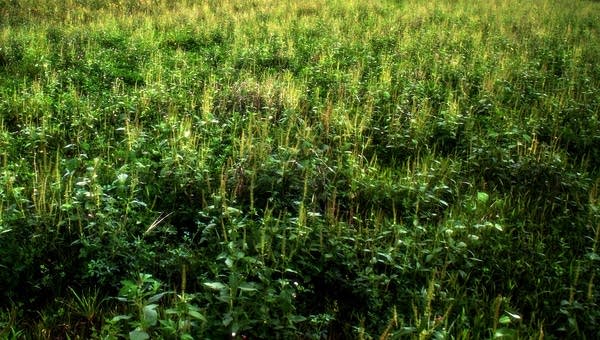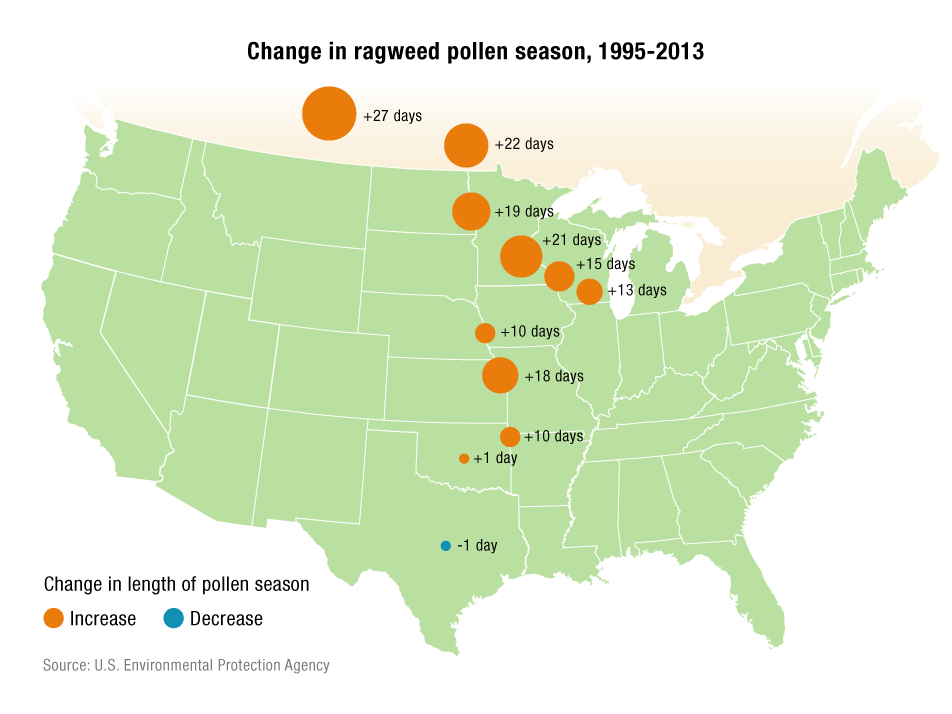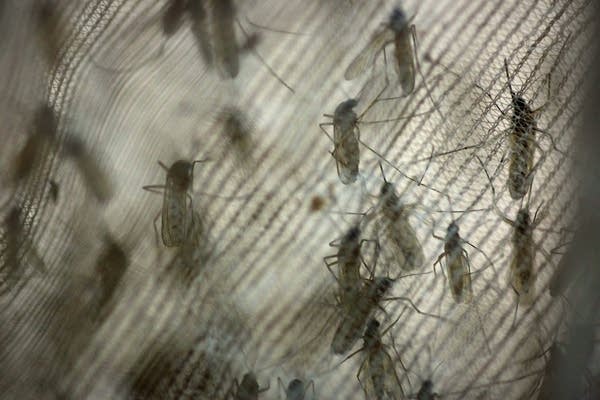More carbon, more misery for allergy sufferers

Go Deeper.
Create an account or log in to save stories.
Like this?
Thanks for liking this story! We have added it to a list of your favorite stories.
Climate Change in Minnesota: An MPR News special report
Just being outside at certain times of the year can make allergy sufferers miserable. Every year, allergies to tree, grass or weed pollen account for millions of hours of missed work and school.
It's getting worse, and it's not just itchy eyes and running noses, say the patients of Dr. Niladri Aichbhaumik, an allergist and allergy sufferer at the St. Paul Allergy and Asthma Clinic.
Turn Up Your Support
MPR News helps you turn down the noise and build shared understanding. Turn up your support for this public resource and keep trusted journalism accessible to all.
"People feel sick, and they just don't feel like they have as much energy as they would normally," Aichbhaumik said.
It could be that allergy sufferers are getting a double whammy from the mechanism causing climate change. Not only are increased carbon emissions leading to higher temperatures and an extended growing season for ragweed and other pollen-bearing plants, the carbon itself is letting some plants make more pollen.

Allergies are one of climate change's prominent effects when it comes to human health, according to a 100-page report released this month by the Minnesota Department of Health. The report, "Minnesota's Climate and Health Profile and Report 2015," cites pollen as one of several contributors to "bad air days." Wood smoke and vehicle exhaust also contribute to poor air quality, and climate change could make some of the resulting pollution worse.
The report explores the likelihood of summer heat waves and flash floods, two events that come with a host of additional worries — heat illness, mold, contaminated drinking water — and even our mental health. It also found that Lyme disease and West Nile virus are becoming more common in a changing climate.
• Air quality: Climate change can make certain types of pollution worse and contribute to the amount of airborne pollen, a problem for those who suffer from seasonal allergies.
• Vector-borne diseases: Climate change has caused conditions that have helped Lyme disease from ticks and West Nile virus from mosquitoes become more prevalent in Minnesota.
• Extreme heat events: Dangerous heat waves are expected to become more common in Minnesota and can be made worse by high dewpoint days.
• Water quality and quantity: Heavy rains are more common in a changed climate, and flooding can threaten drinking water supplies. Drought is another potential threat to water supply.
• Agriculture and food security: Extreme heat and rainfall can impact crops and drought can impact navigation on the Mississippi River. Certain pests and weeds may thrive in a changed climate.
• Mental health: Climate change could threaten our sense of place, uproot lives during natural disasters and force us to cope with changes in the Minnesota landscape and economy.

But it's the exacerbation of allergies that could have especially widespread impacts in Minnesota. Estimates of seasonal allergy prevalence vary, but at least 10 percent of the population in North America is believed to be allergic to ragweed, not to mention tree and grass species. And many people who suffer from asthma also have seasonal allergies.
"It's sort of a burden on the whole health care system," Aichbhaumik said. "People are more sick, seeking more emergency care. It can have a lot of long-term consequences that I don't think people are always aware of."

Burning coal and oil to fuel power plants and cars has increased the concentration of carbon in the atmosphere by 25 percent in the past 50 years. The rising temperatures resulting from that have meant that the ragweed season in Minneapolis is roughly 16 days longer now than it was 20 years ago.
The increase is even greater farther north.
All that carbon dioxide means some plants have more carbon available to build proteins, fats and other compounds, and that can translate into more pollen, said Lew Ziska, a plant physiologist and ecologist at the USDA's Agricultural Research Service in Maryland.
"The carbon in carbon dioxide is essentially the building block," he said.
Some plants take advantage of it more than others, and his laboratory work has shown ragweed, which grows just about anywhere, produces more pollen when there's more carbon dioxide.
"Weeds are the ultimate beneficiary of increased carbon dioxide and climate change because they are in fact so well adapted to change to begin with — that's what basically allows them to grow and thrive," Ziska said.
"Weeds are the ultimate beneficiary of increased carbon dioxide and climate change because they are in fact so well adapted to change to begin with."
Ziska has also found the proteins on ragweed pollen that trigger an allergic response multiply at higher rates with more carbon dioxide. In other words, thanks to carbon dioxide, ragweed pollen becomes a more potent allergen.
The people responsible for the official pollen counts used by clinics and public health officials throughout Minnesota acknowledge the link between carbon dioxide and longer, more intense allergy seasons.
But as with any health issue, it's not that simple, said Mary Anne Elder, manager of the Minneapolis-based Clinical Research Institute.
"Generally speaking the more pollen that's in the air, the more symptomatic patients are. At a certain point though, people can only get so symptomatic."
Meanwhile there are other possible explanations for worsening allergies. Widespread antibiotic use or spending too much time indoors could be contributing, for example.

The Department of Health's new report draws from the best science, said Dan Semonik, who oversees the unit that studies environmental health impacts.
"We certainly hope people will pay attention to it," Semonik said. "When you present information like that, you can disagree on what to do about it. But to disagree with the data? Well, it's just the data."
Kristin Raab, director of the department's climate and health program, said data aggregated from multiple sources show a clear impact on human health from climate change, whether it's allergies or diseases spread by insects.
"We need to start working on these things we already know are a problem that we already aren't as prepared as we should be and think about how these things might get worse in the future," Raab said.


